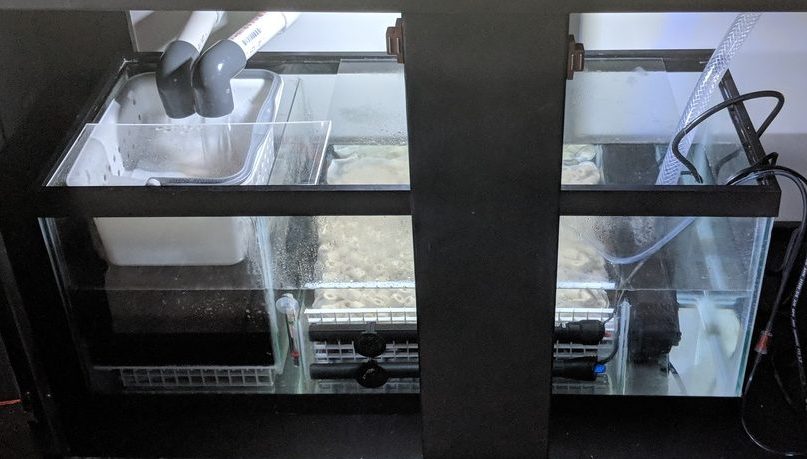
I built a DIY sump filter for my 90 gallon freshwater aquarium using a standard Aqueon 20 long tank. There are a lot of great advantages to using a sump filter, especially on larger systems. A sump can hold several times more filter media than a hang on back or canister filter. Sumps also allow you to remove equipment, like heaters, from the display tank so that it is out of sight. Finally, since a sump can technically be any container that holds water, there is a lot of room for customization.
Overflow Plumbing
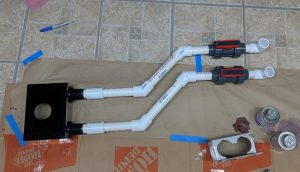
This system is using an Eshopps Eclipse (Medium) overflow, which requires drilling a hole for a 1.5" bulkhead. The overflow has two 1 inch bulkheads, which allows for a Herbie style overflow setup. With this configuration, the primary overflow valve is set partially closed, so that the water level in the overflow box rises to the top of the red secondary, or emergency, standpipe.
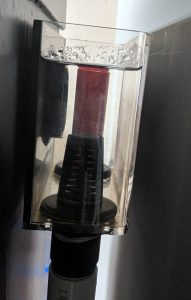
The partially closed ball valve limits the flow through the strainer, maintaining a siphon that runs quietly. A small amount of water flows down the open emergency standpipe. This configuration is popular in reef tanks for its quiet operation and ability to handle a lot of flow without worrying about a clogged strainer causing the display tank to overfill.

Sump Design
This sump is built from a standard size Aqueon 20-long, with three glass baffles siliconed in place to create the different sections. The first two baffles force water flowing into the sump down through the mechanical media and then up into the second section. The third baffle sets the minimum water level in the sump at about 6", or half the height of the tank. This leaves room for roughly 9 gallons of water to overflow from the display tank into the sump in the event of a power failure or pump failure.
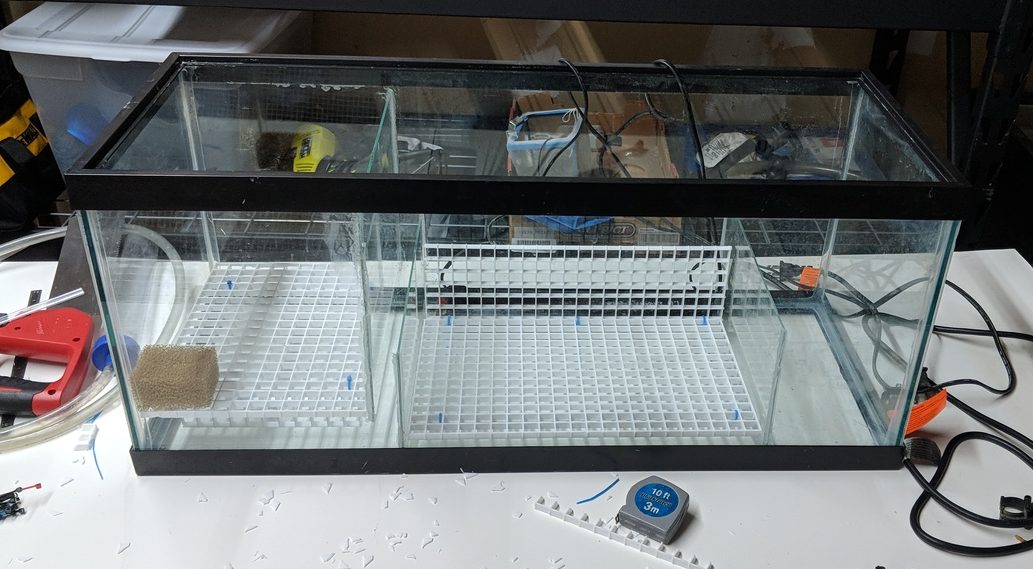
Egg crate style lighting diffuser creates dividers that hold the media in place and keep it off the heaters. I cut sections of the lighting diffuser down using wire snips, and attached the pieces to each other with zip ties. The first section has a platform that holds the media up above the bottom of the first baffle.
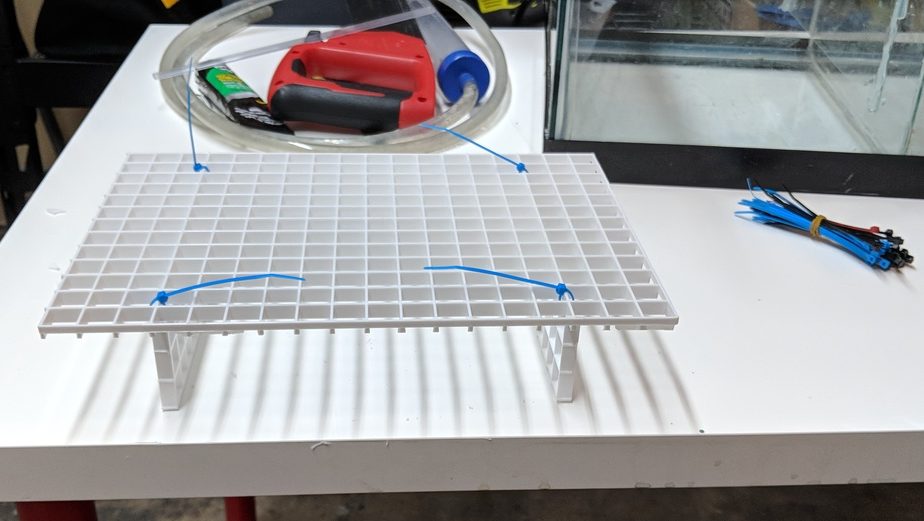
The second section of the sump holds the bio media and heaters. Here I made a platform for the media to sit on, as well as a divider for the heaters. I also made an air driven circulation device using an old sponge filter housing without the sponges. The two intake tubes sit on the glass bottom of the sump below the diffuser, pulling water from the bottom up to the top of the media. The idea was to create more movement across the media and oxygenate the water before it gets returned to the aquarium.
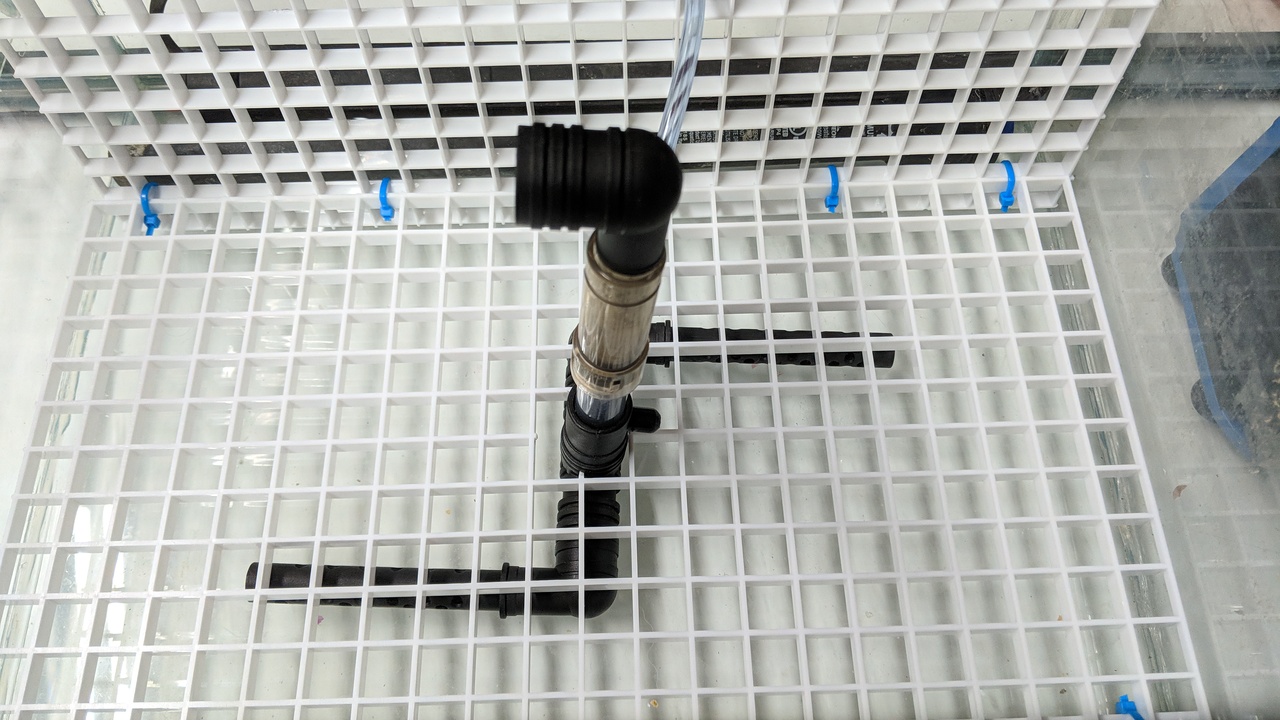
Filtration Media
This sump is using a combination of polyester quilt batting, thick sponges, bio rings, and lava rock for filtration. Water flows from the overflow pipes into a basket that holds a layer of polyester batting, which catches most debris and fine particles before they get into the rest of the sump. I covered how cheap and awesome quilt batting is as a filter media in my post about DIY filter hacks.
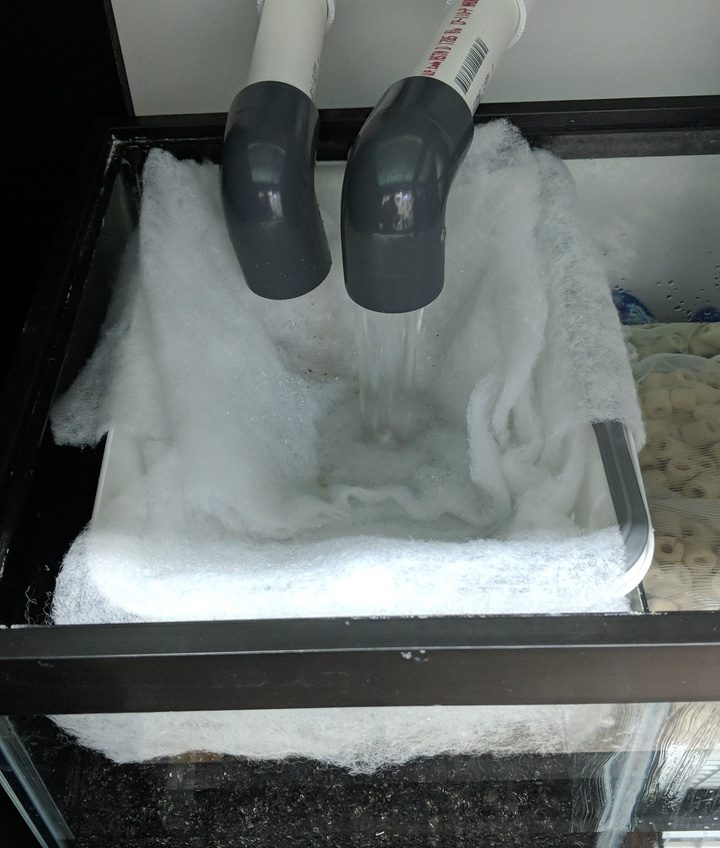
The bottom of the filter basket is lined with a 1 inch think coarse sponge. This traps debris the batting didn't catch and allows the water to drain evenly through the sides and bottom into the 3 inch layer of sponges below.
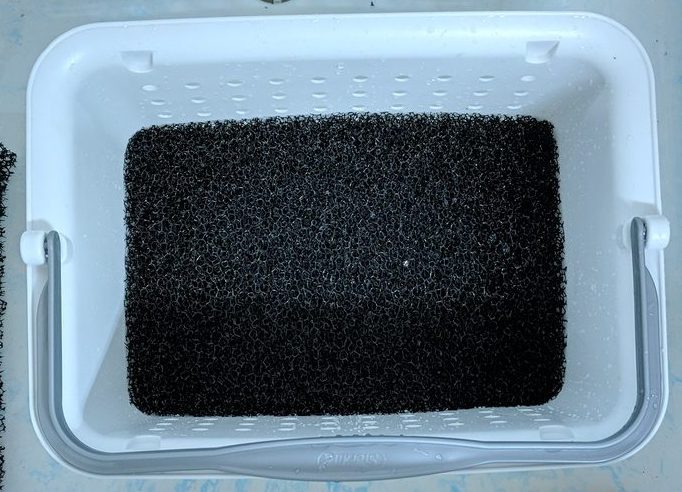
In the second chamber is 7 pounds of lava rock, with 4 one-pound bags of bio rings on top. Lava rock is highly porous and often used in pond filters because it is cheap to buy in bulk. I picked up a 7 lb bag for less than $10 at a home improvement store. I got the bags of bio rings, as well as the coarse sponge for the filter basket, from aquariumcoop.com.
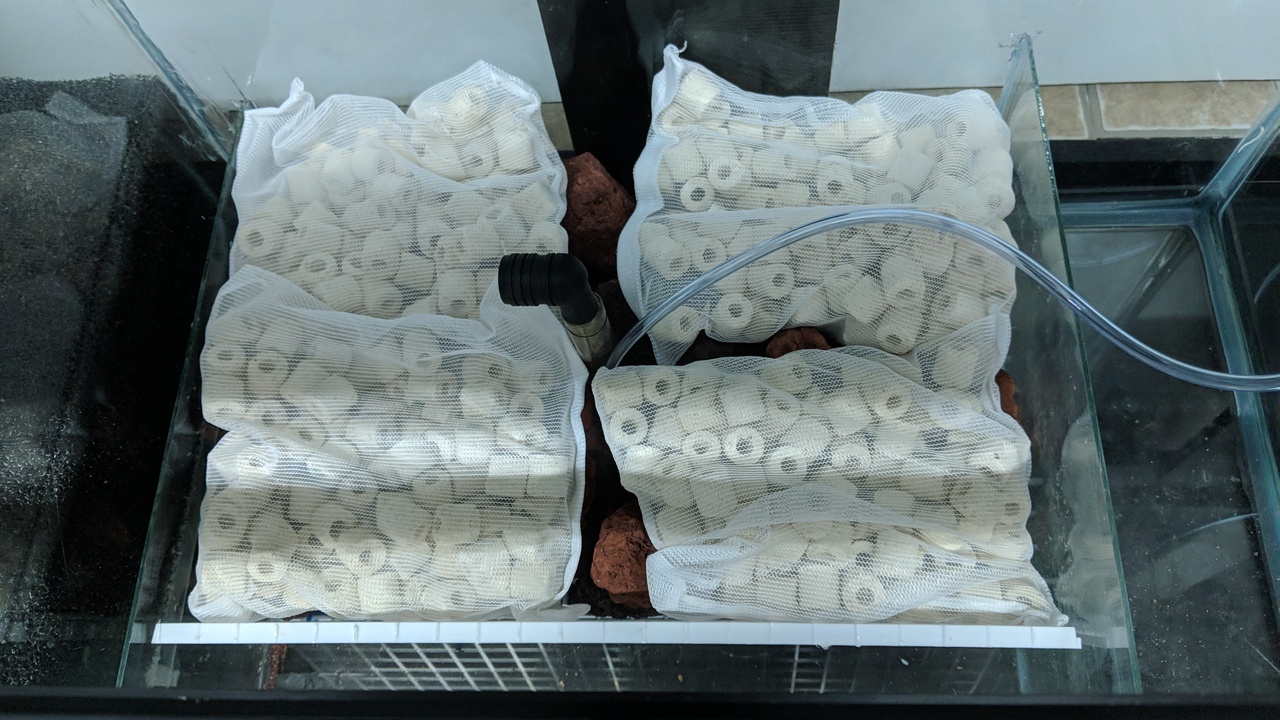
The heaters are positioned in front of the bio media so they are easily visible and accessible if I need to make an adjustment. The final chamber houses the pump, which sends the water back up to the display. This section has extra space I can use to add activated carbon, purigen, or any extra media I may want to cycle.
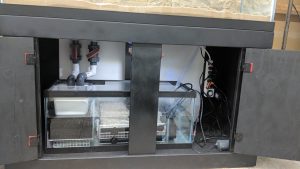
The entire build for this DIY sump cost me under $100, not including the submersible pump ($20) and overflow ($110). Compare that to canister filters like the Fluval FX4 that, while effective, run well over $250 and provide virtually none of the advantages of a DIY sump.

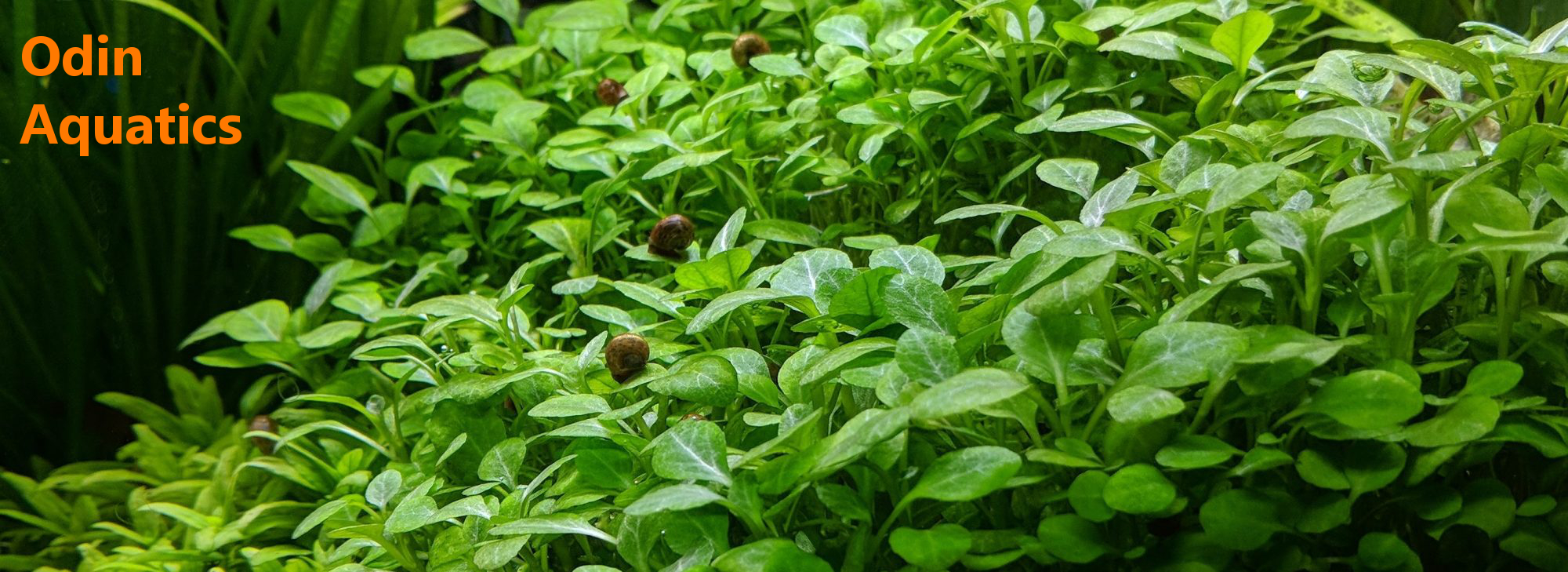
Pingback: Scaping the 90 Gallon Aquarium - Odin Aquatics
Pingback: Easy DIY Filter Media Basket for a Sump - Odin Aquatics
Pingback: How To Reseal an Aquarium - Odin Aquatics
Pingback: Fish Room Linear Piston Central Air Pump Setup - Odin Aquatics
I liked your article. Did you cut the glass display tank? Where and how do I setup the intake pipes. I am very née to this. Thank you
Hi Jason, check out my writeup on drilling this aquarium, it should help you out. https://odinaquatics.com/drilling-90-gallon-overflow
Oh and another question. On the outtake from the pump how do you reintroduce the water into the main tank?
I use a standard return nozzle similar to this Lifegard one: https://amzn.to/3vnp4V1